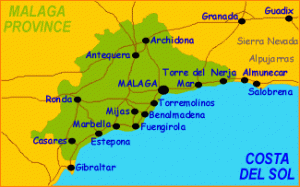What do I do to learn Spanish?
When we
made plans to come to Spain, I think that I underestimated the amount of effort
that it would take to learn a second language. It is not that I thought I would
pick Spanish up by osmosis, but I thought just living in Spain would be enough
to learn the language in nine months. I quickly came to realize that it would
require consistent effort and an intentional plan to reach my learning goals.
In this
post, I want to share some of the things I have been doing to learn Spanish.
1) Intentionally seeking opportunities to
interact with Spanish speakers
Although
there is an English speaking church near us, we intentionally decided to attend
a Spanish speaking church. This has been a great opportunity to meet and
interact with Spanish speakers (I say Spanish speakers instead of Spaniards
because there are a lot of people who have immigrated from South America). The
sermons are in Spanish, but translated to English, which provides a great
opportunity to check if I am comprehending the speaker accurately.
On Monday
evenings, I go to a men’s group that is organized by the church. I insist on
speaking Spanish, even with some of men who also speak English, and they have
mentioned how my speaking ability has improved dramatically over the past few
months. I also volunteer at a local charity on Tuesdays and teach an English class on Wednesday evenings, which provides further opportunity
to interact with Spanish speakers. I have tried a couple of times to set up a language exchange, in which I would meet with a Spanish speaker who is trying to learn English so that we could spend time conversing in both languages, but haven't been able to establish anything consistent.
2) Speaking Spanish in the house when
possible
Becky is
definitely the most advanced Spanish speaker in the family and we try to speak
Spanish to each other when possible. We still speak English when interacting
with the girls or when we need to be precise with our communication, but this
has been a great way to practice speaking.
3) Listening exercises
I find
listening much more difficult than speaking, reading, or writing, because
Spanish is the second fastest language in the whole world. I have discovered
the Easy Spanish channel on YouTube and use it for focused listening practice.
The channel has a variety of street interviews with native Spanish speakers on
a variety of interesting topics. I listen to the videos and try to write a
transcript of the audio. The videos have subtitles, so afterwards I can check
my accuracy.
 |
| The Easy Spanish channel has street interviews on various topics, with subtitles included. |
4) Listening to music
Unlike the
following activity, I can listen to music while cleaning the kitchen or doing
other chores. Numerous worships songs have been translated into Spanish and the
YouTube videos often include lyrics if needed.
5) Listening to sermons in Spanish
This is
another activity that I do while cleaning the kitchen, although I am currently
at the level of listening to “Gringos.” I am currently listening to a series
from an American pastor who served for many years in Peru. It is harder for me
to follow extended speaking from a native Spanish speaker, but I also listen to
such sermons that Becky has through her Bible Study Fellowship group.
6) Watching movies or shows in Spanish
My final
listening activity involves watching movies or shows with Spanish audio and
subtitles. I am currently enjoying the series Isabel, which chronicles the rise and reign of Queen Isabella and
King Ferdinand. The show has won awards for historical accuracy, so it has been
interesting to learn more about Spanish history while also working on my
language skills. I would recommend the show broadly, but the Amazon Prime version only comes in Spanish and Portuguese.
 |
| If you think the current political scene is contentious, it is nothing compared to medievil Castilla (a kingdom that occupied much of current day Spain). It has been interesting to learn more about this pivotal period in Spanish history and practice my listening skills at the same time. |
7) Flashcards
I have
found a flashcard app called Ankidroid, which has been very useful. My deck
changes each day based on how well I have mastered cards on previous days.
8) Grammar workbooks
It may be
old school, but I feel like I benefit from learning and intentionally practicing
grammatical rules and structures. The local library has a section for foreigners with
several workbook options to choose from.
9) Reading novels
The same library
section has a number of books written specifically for foreigners learning
Spanish. They are graded readers with varying levels of vocabulary and
grammatical complexity. I have found that mysteries are the best at keeping my
attention.
10) Free writing
My last
strategy is one that I just started recently. I choose a topic and try to write
an entire page without stopping to look up words or proper grammar. I basically
try to write as a string of thought. Afterwards, I use Google Translate to
check my work and make corrections.
So, how I
am progressing towards my learning goals? I am definitely still far from
fluent, but feel that I have made significant progress and that I will reach a
useful proficiency before returning to the States. Listening definitely remains
the most difficult skill. I am just trying to continue to work on it day by
day. Becky and I have made a promise to each other that we are going to both
continue to work towards fluency after returning from Spain. It is nice to have
a training partner!
Do you any foreign language learning strategies that you have found helpful? If so, please share in the comments below.
Do you any foreign language learning strategies that you have found helpful? If so, please share in the comments below.



Comments
Post a Comment